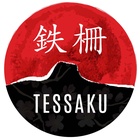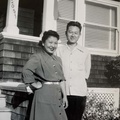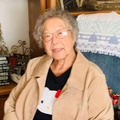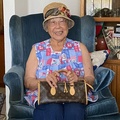Sadly, Mr. Kaneko passed away on September 18, 2016. I regret that he wasn’t able to read his interview and hope that this can honor his memory and pay great respect to his accomplished life.
You had your sensei at the front of the room and he had different kinds of batons, if you will. You hear about Catholic nuns whacking kids? Well, these guys did the same thing.
-- Bob Kaneko
When I visited his Berkeley home last November, I discovered that Mr. Kaneko’s younger self had recently received some major press. Earlier in the year, a planned auction to sell a plethora of Japanese American artifacts, artwork and photographs from the camps was met with significant backlash from the community. Facing pressure, the seller canceled the auction but maintained that his family took meticulous care of the items for over sixty years.

And where does Mr. Kaneko come in? Among the auction items was a picture of him as a preschooler, which serendipitously ended up as the lead photograph in a story published by the New York Times.
Mr. Kaneko would end up dedicating his life to education; first as a middle school teacher at Willard, then as a counselor at Berkeley High School. In their Berkeley home, he and his wife Cathy hosted me in their living room, their dog lying at the foot of the couch. He began to recall memories of camp by talking about his mother, noting that she was alive and well at 98 years old.
* * * * *
Bob Kaneko (BK): I try to verify things with my mother. She’s still alive by the way. I have a picture of her, she’s in the mess hall with the staff, standing outside the mess hall.
I have these memories but I never had it verified with anyone else. One of the words I remember was toa-jyuku. I knew it because that was the pro-Japanese school and there was a point, I think, when the government or the army or the Western Defense didn’t know what was going on in the camps because there was a section for no-no people, who were actually jailed there, in Tule Lake. And there were us, that were in families and they had schools. And I remember having a haircut, very short, if not bald or shaved. White shirts, dark pants, dark shoes. Very parochial, and getting up early.
But here we were getting up at the crack of dawn, and we go to the undokai, we’re all in order, goose-stepping almost, military-like, and bowing to the east. Instructors yelling at us to bow to the east, Japanese national anthem, I don’t know what was going on.
But I was basically a preschooler, right? And you just follow orders. And my parents don’t know because they’ve got their jobs and they’re sending you to school. You had your sensei at the front of the room and he had different kinds of batons, if you will. You hear about Catholic nuns whacking kids, well these guys did the same thing. I remember I had to go to the bathroom and you go to the bathroom you have to stand up and raise your hand to get recognized. And I think I peed my pants, at which point, everybody in the classroom got it.
Then I remember doing sumi, you learn how to write Japanese. First part we went to nursery school, American, then the second part was the big Japanese thing. And they got found out and I remember going to my undokai again at the end of how many sessions; they got found out and they were going to deport these teachers.
This was something that wasn’t supposed to be happen, even in a place where there were Japanese resistors?
BK: Right. I can’t comprehend the whole thing at all. I said it’s got to be my imagination, I mean maybe I made all this up. Because I was thinking the reason why we went to Tule Lake was my dad was a no-no boy. But that wasn’t the case at all.
So how did you end up there?
BK: Well, before my dad died, I talked to him a little bit and he said no, we voluntarily evacuated after Pearl Harbor. That he and his brother, and his brother had a family, and he had my mom, and she was pregnant with my sister, and me. And my uncle apparently had a friend living in Auburn, so they were going to go and they thought they’d be safe in what my mother called the white zone. I guess the Auburn area was designated as a white zone. I don’t know if that means, you were safe.
And where were you living before?
BK: In Berkeley. And so, my mom had my sister and we eventually got rounded up there.
So your family was trying to avoid being rounded up, by being in the zone?
BK: Probably scooped up everybody in California. But, they were still here. Because I knew of a friend, I think his family was living in Oakland. There was a guy who started a community in Utah and that group never went to camp. I said, “How did your parents go to the store and earn a living?” Well apparently whoever organized it, was kind of like Noah’s Ark. The people had different skills he wanted. [laugh] I thought all the Japanese got corralled and went to camp.
Cathy Kaneko (CK): Now, as far as their trip though, from Berkeley to camp, here’s his mom pregnant. They loaded up their car. I guess this other family, had a pick-up truck, they put all the mattresses in there and took it up to this farm. It wasn’t in the town of Auburn. Those two families stayed in the toolshed because Bob’s mom was pregnant, they set up a tent for her close to the house. And Bob and his father and his mother stayed in this tent. Well, she was in her last month’s of pregnancy.
Wow that must have been really comfortable for her.
CK: I think she had the baby actually in the house, that’s what she told me at one point. But she said in an oral interview once that she had it.
BK: She had an oral history done because she was a domestic and worked for this lady who was an ESL teacher. She wrote this book, she lived in Piedmont. After her husband died, she became more of a companion. She hung out with her, I mean she made her beds and stuff but she wasn’t doing floors or windows anymore. But Eleanor Sweat, her husband was very well-connected and she was an ESL teacher in Oakland. In fact I think her husband taught at UC Berkeley.
CK: Well I think she also worked at Cal. And some project that was doing oral histories.
BK: She got this thing bound and everything. She taped it, too.
Now where did you two meet?
BK: Berkeley schools.
You guys crossed paths?
CK: Well, he actually talked me into taking the job there.
BK: I did not.
CK: You did too. [laughs]
BK: I was pretty objective.
*This article was originally published on Tessaku on September 30, 2016.
© 2016 Emiko Tsuchida







